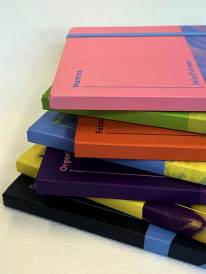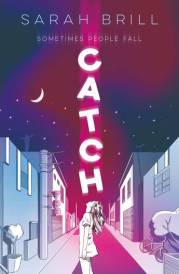Dev Patel The Man Who Knew Infinity
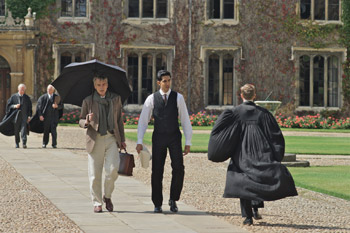
Dev Patel The Man Who Knew Infinity
Cast: Dev Patel, Jeremy Irons, Toby Jones
Director: Matt Brown
Genre: Biography, Drama
Rated: PG
Running Time: 108 minutes
Synopsis: Colonial India, 1913. Srinavasa Ramanujan (Dev Patel) is a 25-year-old shipping clerk and self-taught genius, who failed out of college due to his near-obsessive, solitary study of mathematics. Determined to pursue his passion despite rejection and derision from his peers, Ramanujan writes a letter to G. H. Hardy (Jeremy Irons), an eminent British mathematics professor at Trinity College, Cambridge. Hardy recognizes the originality and brilliance of Ramanujan's raw talent and despite the scepticism of his colleagues, undertakes bringing him to Cambridge so that his theories can be explored.
Ramanujan leaves his family, his community, and his beloved young bride, Janaki (Devika Bhisé), to travel across the world to England. There, he finds understanding and a deep connection with his sophisticated and eccentric mentor. Under Hardy's guidance, Ramanujan's work evolves in ways that will revolutionise mathematics and transform how scientists explain the world. Hardy fights tirelessly to get Ramanujan the recognition and respect that he deserves but in reality he is as much an outcast in the traditional culture of Cambridge as he was among his peers in India. But Ramanujan fights illness and intense homesickness to formally prove his theorems so that his work will finally be seen and believed by a mathematical establishment that is not prepared for his unconventional methods.
The Man Who Knew Infinity is the improbable true story of a unique genius whose pivotal theories propelled him from obscurity into a world in the midst of war, and how he fought tirelessly to show the world the genius of his mind.
The Man Who Knew Infinity
Release Date: May 5th, 2016
About The Production
Historical Information
Srinivasa Ramanujan
Srinivasa Ramanujan FRS (22 December 1887 – 26 April 1920) was an Indian mathematician and autodidact who, with almost no formal training in pure mathematics, made extraordinary contributions to mathematical analysis, number theory, infinite series, and continued fractions. Living in India with no access to the larger mathematical community, which was centred in Europe at the time, Ramanujan developed his own mathematical research in isolation. As a result, he rediscovered known theorems in addition to producing new work. Ramanujan was said to be a natural genius by the English mathematician G. H. Hardy, in the same league as mathematicians such as Euler and Gauss.
Ramanujan was born at Erode, Madras Presidency (now Tamil Nadu) in a Tamil Brahmin family of Thenkalai Iyengar sect. His introduction to formal mathematics began at age 10. He demonstrated a natural ability, and was given books on advanced trigonometry written by S. L. Loney that he mastered by the age of 12; he even discovered theorems of his own, and re-discovered Euler's identity independently. He demonstrated unusual mathematical skills at school, winning accolades and awards. By 17, Ramanujan had conducted his own mathematical research on Bernoulli numbers and the Euler–Mascheroni constant.
Ramanujan received a scholarship to study at Government College in Kumbakonam, which was later rescinded when he failed his non-mathematical coursework. He joined another college to pursue independent mathematical research, working as a clerk in the Accountant-General's office at the Madras Port Trust Office to support himself. In 1912–1913, he sent samples of his theorems to three academics at the University of Cambridge. G. H. Hardy, recognizing the brilliance of his work, invited Ramanujan to visit and work with him at Cambridge. He became a Fellow of the Royal Society and a Fellow of Trinity College, Cambridge. Ramanujan died of illness, malnutrition, and possibly liver infection in 1920 at the age of 32.
During his short life, Ramanujan independently compiled nearly 3900 results (mostly identities and equations). Nearly all his claims have now been proven correct, although a small number of these results were actually false and some were already known. Amazingly, Ramanujan's notes (almost 100 pages) from his last year of life made their way to England. They were almost incinerated in the 1960s, but were saved by Robert Rankin. Rankin saw to it that the notes were added to the Ramanujan archives at the Wren Library at Trinity College, Cambridge, where they laid forgotten until George Andrews discovered them in 1976. This 'lost notebook," as it is referred, includes some of Ramanujan's most important works and constitutes the work that physicists and mathematicians are studying today in their work on string theory, black holes, and quantum gravity.
G.H. Hardy
Godfrey Harold ('G. H.") Hardy (7 February 1877 – 1 December 1947) was an English mathematician, known for his achievements in number theory and mathematical analysis.
He is usually known by those outside the field of mathematics for his essay from 1940 on the aesthetics of mathematics, A Mathematician's Apology, which is often considered one of the best insights into the mind of a working mathematician written for the layman.
Starting in 1914, he was the mentor of the Indian mathematician Srinivasa Ramanujan, a relationship that has become celebrated. Hardy almost immediately recognized Ramanujan's extraordinary albeit untutored brilliance, and Hardy and Ramanujan became close collaborators. In an interview by Paul ErdÅs, when Hardy was asked what his greatest contribution to mathematics was, Hardy unhesitatingly replied that it was the discovery of Ramanujan. He called their collaboration 'the one romantic incident in my life."
Hardy was born in Cranleigh, Surrey, England, into a teaching family. His father was Bursar and Art Master at Cranleigh School and his mother had been a senior mistress at Lincoln Training College for teachers; both parents were mathematically inclined.
Hardy's own natural affinity for mathematics was perceptible at an early age. When just two years old, he wrote numbers up to millions, and when taken to church he amused himself by factorizing the numbers of the hymns.
After schooling at Cranleigh, Hardy was awarded a scholarship to Winchester College for his mathematical work. In 1896 he entered Trinity College, Cambridge. After only two years of preparation under his coach, Robert Alfred Herman, Hardy was fourth in the Mathematics Tripos examination.
In 1900, he passed part II of the Tripos and was awarded a fellowship. In 1903 he earned his M.A., which was the highest academic degree at English universities at that time. From 1906 onward he held the position of a lecturer where teaching six hours per week left him time for research. In 1919, he left Cambridge to take the Savilian Chair of Geometry at Oxford in the aftermath of the Bertrand Russell affair during World War I.
Hardy is credited with reforming British mathematics by bringing rigor into it, which was previously a characteristic of French, Swiss and German mathematics. From 1911, he collaborated with John Edensor Littlewood in extensive work in mathematical analysis and analytic number theory. This (along with much else) led to quantitative progress on the Waring's problem, as part of the Hardy-Littlewood circle method, as it became known. In prime number theory, they proved results and some notable conditional results. This was a major factor in the development of number theory as a system of conjectures; examples are the first and second Hardy- Littlewood conjectures. Hardy's collaboration with Littlewood is among the most successful and famous collaborations in mathematical history.
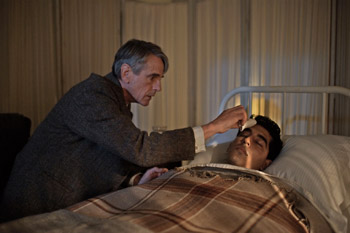 Production Notes
Production Notes
The journey of self-taught mathematical prodigy Srinivasa Ramanujan and the journey of bringing his story to life on the page and screen both began with a letter. In 1913, Ramanujan, a poor accounting clerk from South India with an unexplainable knowledge of mathematics, wrote to G.H. Hardy, a renowned English mathematician and scholar at Trinity College, Cambridge, hoping that Hardy could respond to some of the theorems and formulae Ramanujan had developed on his own. Seventy-five years later, author Robert Kanigel, replying to an editor's interest in a biography of Ramanujan, wrote her to say he had come to realize that the book he had in mind"the book on which this film is based"needed to be not just about Ramanujan but about Ramanujan and Hardy and the relationship that developed between them.
'The Man Who Knew Infinity is not only about mathematics; it's about the powerful bond between two men and how it shaped their lives," says Robert Kanigel. 'Anyone who has ever had an intense friendship, who has felt both closeness and separation, can relate to this story."
In 1988, Robert Kanigel took a three-month trip to England and South India to visit locations where Hardy and Ramanujan lived and worked. On his visit to South India, Robert Kanigel was able to meet with Ramanujan's widow, Janaki, about 90 years old at the time. With the help of an interpreter, Janaki was able to answer Robert Kanigel's questions about her husband, who had died nearly seventy years before. Of that meeting Robert Kanigel says, 'It was a privilege to have met this direct link to Ramanujan."
Some five or six years after the publication of The Man Who Knew Infinity, writer/director Matthew Brown and executive producer Tristine Skyler were visiting Brown's aunt in Big Sur when Skylar noticed the book in Matthew Brown's aunt's library. She thought it would be of interest to Matt Brown as he was studying the Great War, and Kanigel's book was primarily set during this time period. Brown was intrigued by Ramanujan's story and found the biography to be one of the most interesting he had ever read"and quite cinematic. Matt Brown reached out to Robert Kanigel in hopes of adapting the book for the screen. Their first meeting lasted nearly five hours. 'He grilled me about the book and by the end of the meeting I felt as if I had passed some kind of test," recalls Matt Brown. The meeting led to a friendship that continues to this day.
Matt Brown took the project to producer Sofia Sondervan with the idea of submitting it to legendary producer Edward R. Pressman. 'I hoped that Ed would find Ramanujan's story historically important and thus worth making; with his help I was confident I'd get the film made," says Matt Brown.
Edward Pressman has a long history of discovering and working with new and young filmmakers and backing their early films. He is attracted to projects first by the filmmaker, then by the story. He says, 'It is very important that a filmmaker can demonstrate a clear passion for his project and communicate how he would realise the story. This ability to communicate is the essence of a successful director."
About this project Edward Pressman says, 'I didn't know anything about Ramanujan and found the book illuminating. Matt Brown presented a very intelligent and coherent idea of what the film would be so I got a clear understanding of how he wanted to interpret this story to the screen."
Matt Brown also showed the project to producer Jim Young, who he was working with on another project. 'I was fascinated by the relationship between two men who came from two different worlds"Hardy, a professor at Trinity College, at the pinnacle of the intellectual world during that era, and Ramanujan, who came from a small Indian village with no formal education whatsoever," says Jim Young. 'The fact that they came together and had commonality in their intellectual pursuits and also developed a friendship which gave root to doing more for mathematics in five years than men had accomplished in a thousand years is an amazing story."
Adds Robert Kanigel, 'Ramanujan found relationships between numbers, saw patterns among them, and would record them in the language of mathematics. The big amazement, the wonder, for Hardy, was where Ramanujan's ideas came from. As a professional mathematician, Hardy was trained to believe that it wasn't enough to assert a theorem, relationship or pattern; you had to prove it was so, which often took pages and pages of close reasoning. Hardy tried to get this essential idea across to Ramanujan. In doing so, he wasn't out to discourage Ramanujan. Nor was he out to inspire him; Ramanujan didn't need inspiring. It was just what mathematicians did, and Ramanujan needed to learn it. On the other hand, proofs, as difficult as they were, were almost the easy part of mathematics. The hard part was getting the ideas in the first place. And Ramanujan seemed to have a bottomless well of them."
Producer Joe Thomas helped raise much of the financing for the film with his partners from Xeitgeist Entertainment. 'I was first introduced to Ed Pressman at a special screening of Wall Street: Money Never Sleeps, and have always been an admirer of his ability to discover and nurture talent," says Joe Thomas. 'I saw he was developing The Man Who Knew Infinity, so together with my partners at Xeitgeist, we asked if we could become involved in the film and help with financing. Given the subject matter, it was harder than I thought, but Matt had written a terrific script and there was a good level of enthusiasm."
With the financing for the film beginning to fall into place, Matt Brown had the hard decision of casting his two leads. He knew it would be necessary to find an accomplished Indian actor with some worldwide audience appeal to portray Ramanujan, and the name that was foremost in his mind was Dev Patel, who had achieved acclaim for his roles in the Academy Award® winning Slumdog Millionaire and the global hit The Exotic Marigold Hotel.
'To succeed in bringing Ramanujan to life, I needed someone who the audience could relate to and feel empathy for," says Matt Brown. 'I knew from my very first meeting with Dev Patel that his natural charisma, empathy and unbelievable instincts would jump off the screen."
Says Dev Patel, 'I wanted to do the role because it is rare for an actor who looks like I do to come across something that is so meaty, and I knew the film would attract stellar artists who I'd get to act opposite. When a film does not rely on CGI or special effects, it's performance driven and I thought a story about two humans with drastically different ideals would be an amazing journey to go on and it turned out to be just that.
My character was plucked out of obscurity in the middle of India and brought across the water to Trinity College, Cambridge, one of Britain's greatest institutions, where he worked alongside the great mathematician, G.H. Hardy who is played by Jeremy Irons. Ramanujan was very religious and thought mathematics was like painting without colours; he believed every equation was an expression of God. Hardy, on the other hand, was an atheist and believed in the practical way of doing proofs to explain theorems and this is what he tried to instil in Ramanujan.
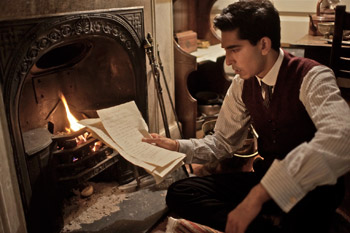 Collaborating with Jeremy Irons is a dream for any young actor, and he was everything I expected and more. He has a wonderful sense of humour and is so generous. The teacher/student role came very naturally, and Jeremy created a space that allowed me to take big risks and be confident. He's an incredibly thoughtful human being and that translates to his acting style. He's all about the nuances"everything had to be just right on set. If it was winter outside, then there had to be gloves and an umbrella on the seat, and if we had done a ton of mathematics on the board it had to be dirty. It allowed us to really immerse ourselves into the environment almost as if we were sucked into a time warp. It was amazing.
Collaborating with Jeremy Irons is a dream for any young actor, and he was everything I expected and more. He has a wonderful sense of humour and is so generous. The teacher/student role came very naturally, and Jeremy created a space that allowed me to take big risks and be confident. He's an incredibly thoughtful human being and that translates to his acting style. He's all about the nuances"everything had to be just right on set. If it was winter outside, then there had to be gloves and an umbrella on the seat, and if we had done a ton of mathematics on the board it had to be dirty. It allowed us to really immerse ourselves into the environment almost as if we were sucked into a time warp. It was amazing.
Trinity College took my breath away. For us to get the permission to film there with a big crew was such a feat; we were incredibly lucky. I went to a school that was on the other end of the spectrum from Trinity so when I got there I could immediately put myself in Ramanujan's shoes and feel the magnitude of what was happening.
Playing Ramanujan was very instinctual for me. I read certain passages from the book, and though there is no footage of him, there are a couple of pictures we had for reference. He was physically very different than me" he was rather portly"and he was a very nervous human being. While I embodied the obvious 'fish out of water" feeling [at Trinity], to make things more dramatic and to work within the realm that we were telling the story, I had a lot more freedom than just mimicking some found footage. I knew his background, but it was really about going on the journey within the script and fully committing to what was on the page. Everything is pretty much there so I understood where he began and where he ended."
For G.H. Hardy, Jeremy Irons was a clear favourite for both Brown and Pressman. Irons had starred in the Pressman produced Reversal of Fortune and went on to win the Academy Award® for Best Actor for his portrayal of Claus von Bülow, and Pressman was keen to work with him again. 'What excited me about The Man Who Knew Infinity was that I knew nothing about the story nor the man, and I found the mathematics of it all fascinating," says Irons.
'Another attraction was that I'd be playing a typically closed off boarding school educated Englishman, who for professional reasons, pulls an uneducated Indian mathematician from a life full of colour, warmth and emotion, and brings him to a rather cold country on the brink of war. Even though they worked closely together, Hardy was not in tune with his emotions and therefore could not respond to Ramanujan, a completely different beast. It was an interesting area to explore, one I had touched on before in my career, and it was interesting to see how Hardy slowly formed a deep friendship with Ramanujan through his passion for mathematics."
On meeting Matt Brown for the first time, Jeremy Irons recalls, 'I learned he had the project for a number of years and was very passionate about it. When you have a relatively inexperienced director, two things can happen: he can either be full of bull****, acting as if he knows what he's doing when he clearly does not, or he can be honest and admit he doesn't know what he's doing but he loves the story and is confident he can make it. Matt Brown was the latter and had a wonderful humility. I loved his passion, his openness and his willingness to listen to other people. As we were filming he was very clear about what he wanted and the rhythm he wanted; he gave very good notes. He tended to leave you alone if you were going at it alright, and then would pop in with the occasional suggestion, which would really enliven you and give you a slight different take on something."
Jeremy Irons' says of portraying G.H. Hardy and challenges of finding his character, 'When you play a character, there really is no difference if he is fictional or real, unless he exists in people's consciousness. I've played real people in the past, and what you try to do as an actor is in the first few minutes of the film make people forget what the real person looked like and make them think the person is you. When you have the luxury of the character being a real person, you look at as many photographs as you can and try and sort of weigh up who that person is, what the photograph tells you, which oftentimes is not a lot. Hardy wrote a wonderful booklet, perhaps from his speech -The Mathematician's Apology,' which takes you inside his passion for mathematics. It made me realise that something that is entirely passionless to me does contain passion, wonder and mystery and art.
His writing really helped me get into the character. Also, his lectures are reported and he was a very accessible lecturer; he talked about something that to me is very inaccessible and began to open it up a little. I sort of feel in a rather irresponsible way, responsible for most of the characters I play and responsible to the film to make the character believable and interesting.
I think the relationship between Ramanujan and Hardy is a difficult relationship for us of this generation to understand. They worked very closely together until Ramanujan became ill, and when Ramanujan returned to India, Hardy realised what an enormous part of his life had been wrapped up in this man. I worry about generalizing because I think emotions and attachments mean different things to different people at different ages. But I think what Hardy said about his time working with Ramanujan as being the only romantic incident of his life, has been slightly misinterpreted. We think of romance as love, but I don't think it is; romance is just when life becomes more colourful, more lively, more vibrant, and I think this is perhaps what Hardy meant. It certainly was by his own admission that his time with Ramanujan was when he was the proudest of his work, and probably the happiest."
Having secured his two leading actors, Matt Brown turned his attention to finding the best team behind the camera to help him realize the imagery and authenticity of a period film.
His choice for a cinematographer was Larry Smith, who worked on a number of Stanley Kubrick films and was his cinematographer on Eyes Wide Shut. 'My job is to provide the look of the film, the energy of the camera, if it moves or does not move, and to help the director choose visually strong locations," says Larry Smith. 'A period film gives added challenges, and I relish challenges. We shot everything on location and you don't have the same control over weather, lighting and moving walls around as you do in a studio; some locations can back you into a corner. But coming to set and figuring out how you are going to make it look interesting puts a bit of a spark in the day for me. Using Trinity College as a backdrop was magnificent, and having previously shot in India, I knew we would get a very saturated colour palette and a very hard light. We filmed in a beautiful Hindu temple where the interior was very dark and moody, so I was able to use the harsh light from outside to bring some light inside the temple to make it come alive. One of the great things I learned from Kubrick was how to manipulate film with light, both natural and candlelight, and it worked perfectly for our film."
Says Matt Brown of working with Larry Smith, 'It was a great partnership. His lighting is like no other, and he has the ability to make what someone else would need a whole day to do happen so fast and so beautifully"he's truly a genius."
For a production designer, Matt Brown chose Luciana Arrighi, who worked on several films with the esteemed production team of Merchant Ivory, and won the Academy Award® for Best Art Direction for Howard's End.
'Luciana is one of the most talented, hard-working people I have ever met," says Matt Brown. 'The combination of her design and Larry Smith's lighting gave the film a remarkable look, and I could not have been more pleased."
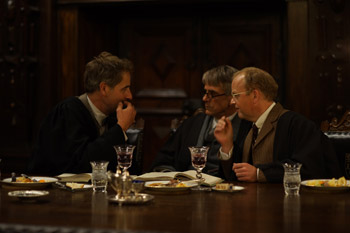 Matt Brown continues, 'One night we were filming at Nevile's Court [at Trinity College] where hospital tents had been put up to treat the wounded from the Great War. Everyone was in costume, and it felt as if we had gone back in time. It was eerie because the court was sort of a hallowed ground"so many young men had died there. The actors and crew fed off the authenticity filming at Trinity provided, and I am forever grateful to the college for giving us such a gift."
Matt Brown continues, 'One night we were filming at Nevile's Court [at Trinity College] where hospital tents had been put up to treat the wounded from the Great War. Everyone was in costume, and it felt as if we had gone back in time. It was eerie because the court was sort of a hallowed ground"so many young men had died there. The actors and crew fed off the authenticity filming at Trinity provided, and I am forever grateful to the college for giving us such a gift."
Adds Arrighi, 'Shooting at Trinity was very interesting because they had never allowed a film to be made there. When we first visited, they made it clear that they did not want the Hollywood juggernaut. But everyone turned out to be delightful, including the Dons and Fellows, who were very interested in the story and wanted to keep the link between India and the UK. We had three days to film all the courts and wonderful sights that are there, the libraries, the chapels, all sort of things. It was an enormous challenge to create Hardy's rooms because we had to depict the man with furniture and props. Nobody believed I could turn a very grand room in an Elizabethan house into a rather pokey study, the workroom of a man who devoted his life to mathematics. We took down the paintings and curtains; everything that was delightful we got rid of. Then we brought in shabby leather sofas, a blackboard, anything Hardy would have used to work on the equations he was trying to prove. I always encourage the artists to share their ideas, and Jeremy's contribution was huge. He suggested we add more sports cups since Hardy was very interested in cricket and had won some trophies. And he agreed there would be no family photos because Hardy was an orphan. Jeremy settled in nicely, so we succeeded.
I lived in India for a bit as a child, and in a way it has not changed since then. We went to Chennai where Ramanujan studied and to Kumbakonam where he lived. There we found the most wonderful Brahmin houses, which are very special architecturally, and there's a small agricultural town with streets full of them. It was enchanting, breathtaking really. There's wonderful scenery there, lovely people, great extras. We were so lucky.
Ramanujan was a very strict Brahmin and got his inspiration from the Goddess Namagiri. So we had to find a temple where he prayed and a temple where he wrote all his equations on the floor. Scouting the temples was exciting"we realized a temple is not just a place where people pray, it is a place people live. There were people talking with a guru about their problems, people selling things, a wonderful ceremony with bells ringing and incense; there was even an elephant. One of the temples we used was absolutely magical; it was on a lake and had all these colours, these washed out blues and greys.
Another aspect of the film that was a thrilling challenge was that Matt wanted to take the mathematics"the figures, equations, diversions"and make it into something visual; he didn't want it to be just some dry old thing about tutorials and gruff old men and people writing on blackboards."
For his costume designer, Matt Brown turned to Ann Maskrey, who is most known for her work on The Hobbit series. 'When I first read the script I was stunned by my ignorance; how had I not heard of this extraordinary tale before? I was fascinated by the story of a man traveling from a poor part of South India to Trinity," says Ann Maskrey.
'I had to do a lot of research to get both the English and Indian parts of the shoot right. It was a period in time when things were changing in England. Cambridge was a stilted elitist environment, and not just from the look of it"there were characters [in the film] who were quite particular and not well documented. Hardy had certain idiosyncrasies that I had to bring forth through his wardrobe. Luckily, Jeremy Irons, who was perfectly cast as Hardy, wears clothes very well and has a similar look to Hardy. We had a crowd of sixty Fellows, and you can't pre-fit on a movie like this so we had to get the extras to arrive early and size them up visually. My team had a great plan, an assembly line of sorts. First you'd try a jacket then you'd go to the next area and try on the trousers, then get the shoes, shirt, collar, etc.
Ramanujan's wardrobe was interesting because of the transition he makes. He starts as a poor Brahmin boy in South India and then has to become more westernized when he is put in the elite society of Cambridge where no one understands his religion or background. He was quite an awkward human being and we had to show this in his costumes. He wasn't used to looking after himself, didn't know how to tie a tie, and hated wearing Western shoes. The challenge was making sure Dev didn't look comedic when I had him in a mismatch of Western and Indian costumes. He grows into the English side of things then goes back to India and must readjust.
Recreating India in the early 1900s was something I had never done before, and photographs from that time period are very rare so it was a huge challenge. I had to learn all the details of not only that time period but of that area in India as well. For example, the women tie their saris in a completely different way and use nine yards instead of the more standard six, and colours are very important.
It was the little things I had to watch out for. I worried we wouldn't find clothing in the colour palette that Matt Brown and I both wanted to use, that everything would be pink polyester. I feared when we asked extras to wear sandals, they'd show up in rubber flip-flops. Thankfully, there weren't too many crowd scenes, and most were in small interiors with one or two key people.
Apart from abiding by all the rules of what people typically wore in India, I also had to emphasize whom the characters were by their costumes. For example, Ramanujan's mother was a real forceful character who was very influential in his early life. I wanted to get that across with the colours of her clothes so that there was no denying she had such a strong personality. His wife, Janaki, was to seem more soft and gentle, and I had found a really beautiful sari, sort of a soft peach colour."
Producer Joe Thomas added, 'I was born in South India so I was somewhat familiar with the cultures and traditions of that region, and felt I could be the most useful to the production during the Indian shoot. It was thrilling to finally arrive on set and watch the story come to life. Having to start with a new crew with very little turnaround time after the UK shoot was a challenge, but the department heads were such wonderful professionals that we managed to surmount any problems that came our way."
Says Dev Patel of Arrighi and Maskrey, 'Luciana and Ann were the two unsung heroes of our film. Luciana's set design and Ann's costumes really helped us actors immerse ourselves into the period, something I had never really been exposed to on any other project. The costume dictates how you stand, and Ramanujan goes from wearing dhotis in India to wearing a three-piece suit with starched collars, cufflinks, a tie, all the buttons that get fitted on; it immediately felt alien to me so I was able to embody his awkwardness of wearing suits.
In terms of set design, along with our cinematographer who is also phenomenal, Luciana created this moody tone, which was full of little gems we could react with, like the blackboards. We were allowed to be very physical with the set and that was incredible. One of the gems, which I was given as a wrap gift, was a dip ink pen. There was something about the dipping and the scratching of the nib on the paper that really felt instinctually right and added to the feverish nature of the character. I know it sounds like a very small detail, but it was something that really helped. I also had a satchel that we incorporated [into the film]. We originally only had it with Ramanujan in London, but decided that he had brought it over from India so I did not feel right unless I had it with me. Though you couldn't see them, there were three notebooks inside, the notebooks he wrote in all the time, and having them helped as well.
I'd never worked in South India before, but I always enjoy going to India and shooting movies there. The energy of the crews is extraordinary; it is absolute chaos but in that chaos you see all these smiling faces, as everyone is so pleased to be working on a film set. It's a great but chaotic energy that I really fed off of. The South is beautiful. We shot on some lovely locations in Chennai, and we went to Pondicherry, this French colony in India that blew my mind; it was truly spectacular. We filmed inside a temple, a really old beautiful temple, and the crew had to be very respectful and had to remove their shoes before going inside. The temples were a key element of Ramanujan's character; he would sit in a temple and write all over the floor with chalk. He would just riff mathematically as if he was in a state of trance or meditation, and that is when his finest work came to him. When he went across the seas, his wife would go to a temple to be closer to him and to see all his work everywhere. This led to a beautiful scene in the film where they meet again after a very long time."
On collaborating with the costume and production designers Jeremy Irons says, 'When you are talking about costumes or what the character wears, it is a two-way collaboration between the designer and the actor. The actor has to feel that the clothes help him into the character. Hardy was a man who was completely unaware of how he looked. Purportedly, if he stayed in a hotel he'd cover up all the mirrors; he didn't like to see himself. He was quite a shy man, and became a renowned eccentric at Cambridge and Oxford because he did his own thing and didn't think about the effect he had on other people or what he looked like.
So Ann and I talked about his having sensible suits that are hard wearing and in good fabric that will keep you warm. In those days, as a professor at Cambridge, you would always wear a suit when you were working. You'd wear a collar and tie, so we looked at ties he might wear from his past, such as his old Wykehamists"I think he went to Winchester College. Everything with the costume helps you get into character when you arrive on the set to do a scene.
There are many different elements that make up your character, and personal spaces such as a study are incredibly important"they tell you an awful lot about a person. When you're making a film, as an actor you're just part of the process of being that character. You rely on other people's knowledge, experience, taste and choice. I walk into a room and if it is right I'm really happy, and with Luciana everything was spot on. A sign of a good designer is that she (or he) knows the characters well enough to know how their particular rooms would be and when I walk into something that is as right as Luciana's work, it adds another layer of my reality that she has created for me."
Newcomer Devika Bhise was chosen to play the role of Janaki, Ramanujan's wife. Through her training in classical Indian dance, Bhise felt very comfortable in her role. 'I did a lot of research about the Tamil Brahmin Iyengar culture and was fortunate enough to talk with the author Robert Kanigel, who had met Janaki late in her life," recalls Devika Bhise. 'Robert told me about Janaki's life after the death of Ramanujan and how she had helped orphans and supported education for children, so I imagined she would have been very kind hearted. Matt and I talked a lot about how to make Janaki smart because she was technically illiterate. Even though she could not understand math, she watched Ramanujan write in chalk on the temple floors and instinctively understood his passion and supported his decision to go to England.
We were fortunate to film in some wonderful authentic locations. Being Brahmin, Janaki was deeply religious and would spend a lot of time in the temple. We filmed in an extremely beautiful one just outside of Chennai, and it had such incredible energy, which helped bring everything to life. We also filmed in a tiny Brahmin village that has remained completely untouched; walking through it was like going back in time. My character had to wear a traditional nine-yard sari, which is very difficult to drape so it would often fall off. One of our extras from the village, an old woman who spoke no English or Hindi and used a lot of hand signals, would take me into a back room and re-drape the sari for me. There were many things I had to learn to portray Janaki's everyday life and I could not have gotten through it without the help of the local people."
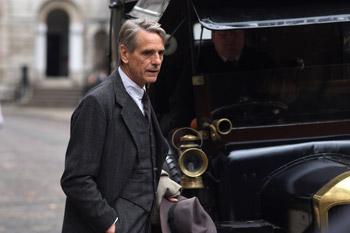 On working with Dev Patel, Devika said, 'Dev Patel is a brilliant actor and he is also the same age as me so with all the travelling to locations and the very long hours of work it was fun to have a buddy on set. Although I did not have any scenes with Jeremy Irons, I was fortunate to meet him in Cambridge and he was lovely. His advice to me about acting was -be great, don't be amazing but be great.'"
On working with Dev Patel, Devika said, 'Dev Patel is a brilliant actor and he is also the same age as me so with all the travelling to locations and the very long hours of work it was fun to have a buddy on set. Although I did not have any scenes with Jeremy Irons, I was fortunate to meet him in Cambridge and he was lovely. His advice to me about acting was -be great, don't be amazing but be great.'"
The film used the resources of Indian Associate Producer and Executive Producer Swati Bhise to help with the authenticity of the Indian traditions of that time. 'India was under British rule, but Ramanujan would have worn traditional clothes from Tamil Brahmin Iyengar as it would have been against his religion to wear Western clothes or to have travelled overseas. He would have worn the traditional forehead mark in the shape of a -U,' which represents the feet of Vishnu and a joining of a leaf," says Swati Bhise. 'For the women, saris at that time were bright silk fabric in red, yellow or deep green to show love and life. In that region, the saris were made from nine yards of fabric and draped through the legs like trousers. They would be from silks but fairly plain with not too much gold thread. The women wore earrings, bracelets, anklets and toe rings as a sign they were married, and a Tali around their neck which the husband puts on at the time of marriage and is not removed unless the husband dies."
To help with the portrayal of mathematics in the film, Matt Brown relied on another special consultant: Ken Ono, the Asa Griggs Candler Professor of Mathematics at Emory University in Atlanta, Georgia, and a Ramanujan scholar. Ono has his own personal connection to Ramanujan. When he was a young boy, Ono's mathematician father received a flimsy rice paper envelope covered with Indian stamps. The letter inside was from Ramanujan's 85-year-old wife and widow, Janaki, thanking Ono's father for being a member of the global community of mathematicians who sent money to support the raising of a statue in Ramanujan's home town.
Ono helped the art department choose which of the huge volumes of mathematical manuscripts were most appropriate to reproduce, and made sure that everything was authentic and done correctly. Of his collaboration with Ono, Matt Brown says, 'Our art department was incredibly well researched and strong, but Ken helped straighten [out] a few things. He also went through the script at length making sure that what we said was exactly right. He then helped the actors understand the basics of what was behind what we were talking about because it is the most obscure, dense, complicated mathematics you can find. I also had some big questions for Ken about how I wanted to let people into Ramanujan's head as it was really important people could understand how he saw the world."
In describing the work of Ramanujan, Ono says, 'The mystery behind Ramanujan, the mathematics during his time and his legacy that we enjoy today, all of it is quite frankly mind-boggling. Back in the day they asked the question, -how did Ramanujan come up with his ideas' and we still ask that question today. I can offer all sorts of answers, but we don't really know. Perhaps what is even more important is that we are still finding new applications all over mathematics, all over science that we wouldn't really have imagined ten years ago; the legend of Ramanujan is mysterious at every level. We don't know how he came about his findings, and we are discovering that he imagined expressions, he imagined formulas that would go on to be very important in terms of areas that did not even begin to exist while he was alive. It is an incredible story.
The Hardy/Ramanujan collaboration is quite remarkable. First of all, there would have been a language barrier and many cultural barriers, and this all happened during World War One. In terms of their work, one of the major obstacles they faced was that as an untrained mathematician, Ramanujan just wrote down his findings on pieces of paper and thought that would be sufficient. But as a Western-trained mathematician, Hardy recognised that you have to prepare your findings for publication in books and journals, and to do this properly you have to justify and offer proofs of your claims. Ramanujan was not accustomed to offering or producing these, so one of Hardy's most important tasks in mentoring Ramanujan was to make Ramanujan recognize that if his work was to be accepted by the greater mathematical community, he had to conform and learn how to assemble and then write coherent proofs.
Ramanujan kept notebooks, his mathematical diaries so to speak, which are readily available today and mathematicians are still trying to figure out their contents.
Ramanujan also published more than thirty papers, which appeared in ordinary journals, and these journals are also readily accessible on line and in university libraries. Professional mathematicians have edited Ramanujan's notebooks, and have published commentaries on individual chapters in his books, which is highly unusual"usually mathematical publications only appear in the form of refereed publications and research monographs. Ramanujan is one of the few mathematicians whose work is so important that reproductions and scans of his original notes are made widely available online and in print. In the film, Hardy takes Ramanujan to the Wren Library, and shows him Newton's Principia Mathematica.
The Man Who Knew Infinity
Release Date: May 5th, 2016
MORE


